Sergey Pavlovich Invincible. World designer
But this is only a dream, but for now you need to be vigilant.
and keep doing efficient, modern weapon
for all types of troops. "
S.P. Invincible
"To fight, to build, to grow bread, is the fate of our people." This poetic phrase briefly conveys the essence of the life of a Russian person over many centuries. They raised bread and built our ancestors, but first of all they thought about protecting the family, home, and borders of the country. Russian weapons were always invincible. And the main merit in this belongs to the masters who forged it. In the twentieth century, rockets became the main weapon of our country. One of the most famous designers of rocket systems, the hero of Socialist Labor, the winner of the Lenin and three times the State Prize is a man of legend - Sergei Pavlovich Invincible.
Where did this rare, combat surname come from? There is a legend that the grandfather of Sergey Pavlovich - a native of the Kursk province - was the constant participant of the local fist fights, which at that time were ordinary Russian fun. And, obviously, he played in these well-done entertainments by no means the last role, which is why the nickname “Invincible” stuck to it, which extended to the whole race.
The father of the future designer, Pavel Fyodorovich Invincible, was born in a small town Oboyan, located on the right bank of the river Psel. On the eve of the First World War, he moved to St. Petersburg, got a job as a lathe operator at the Metal Works. And soon he managed to master another, rather rare profession of a driver-mechanic. For participating in the strikes, Pavel Fyodorovich was first taken under supervision, and then completely sent away - to the Ryazan province in the city of Skopin. After the February Revolution 1917, he immediately returned to the capital, where he was attached as a personal driver to Clement Voroshilov. Pavel Fyodorovich lived in Tsaritsyn together with him during the Civil War, but here he often had to transport little-known Stalin. At the end of 1919, Pavel Fyodorovich was sent to Moscow, but typhoid was picked up along the way, was removed from the train not far from Ryazan and sent to the hospital, where he lain for several months. There he met the mother of the future designer, Elena Andreevna Motina, who worked at the local telephone exchange. Soon the young were married, and a couple of years later, 13 September 1921, their first child was born, who was named Sergey.
The civil war at that time began to subside, but it was difficult to live in the cities, there was no work, there was nothing to feed the family. Pavel Fedorovich, who had not yet fully strengthened after suffering typhus, decided to go to his small homeland. Already on the spot, acquaintances told him that a new state farm, Nikolskoye, was being created in Shchigrovsky district. There the father of the future designer and entered the chief mechanic. At that moment, when Sergey was one year old, Elena Andreyevna said goodbye to her native Ryazan region and went to her husband, who managed to gain a foothold in a new place.
All Sergei Pavlovich’s barefoot childhood passed in Nikolsky and its surroundings. The village itself was a former estate. The Invincibles family had their own little house with outbuildings - previously the place of residence of yard people. Directly under the windows was a pasture on which cows grazed. However, the animals did not cause any interest in the boy. All his attention was directed towards the mechanical workshops, which his father was in charge of. An indelible impression was made on Sergey by a puffy locomobile, a brightly blazing fire of a forge, a sheaf of sparks pouring from the anvil from the blows of a blacksmith.
At six years old, a boy, you can say, independently identified himself in elementary school, located in the neighboring village of Long. By age, it was still too early to comprehend the basics of learning, but he did not want to lag behind his more senior comrades. Schoolchildren from the village of Nikolskoye, as a rule, went all together, crowd. Sergey without invitations put a canvas bag over paper on his shoulder with paper and pencils and tied in with them.
In 1928, when the boy was seven years old, the Invincible family moved to the district center, the town of Shchigry. Here Pavel Fedorovich got a job as a head of a driving school, and soon he headed the artel of metalworkers. Sergey attended the schools of the first and second stages, and the last three classes finished in the city school №1. He studied well; mathematics was especially easy for him. Invincible for his age, he was good at mechanics, he was fond of modeling, and at fourteen years old, a glider on a steam turbine was sent to the Moscow exhibition.
Subsequently, the designer wrote about his childhood years: “I was surrounded by excellent teachers, good comrades, kind people and wonderful nature. The attitude to study and to work, the formation of character, physical and moral education were given to me by the school, the family and the urban environment .... Of course, the Soviet government had excesses, people lived difficult. However, there was no emptiness in the souls. A cult of knowledge was formed in society. And it is much better than today's dollar cult. ”
In 1938, Unbeatable successfully passed the final exams and received a high school diploma. The time has come for further selection. Sergei had a firm decision to enter the Moscow Red Banner Mechanical Engineering Institute. N.E. Bauman. Slowly saying goodbye to his family, Invincible poisoned himself in the capital: “I wore my best and only dark blue suit. There was no shoe, put on sports slippers. Such a combination in those years was not unusual: the lack of light industry goods was widespread. ” Before going outside the threshold, Pavel Fedorovich embraced his son and put thirty rubles in his hand. In those times it was not too much money, but Sergei Pavlovich knew very well how hard they got to his father.
The capital institute had six faculties - three military and three civil. Each military faculty had a corresponding letter indexation: “H” - the faculty of ammunition, “O” - armored, “E” - artillery. Invincible chose the faculty "H". The entrance exams had to be taken in seven subjects: Russian written, essay on literature, mathematics, physics, chemistry, story VKP (b) and a foreign language. The tests went on for a month, the selection was both tough and rigorous. Eight out of nine applicants were eliminated. Sergey Pavlovich was among the “lucky ones” who arrived.
After a measured life in the provincial Shchigry, it was very difficult for Sergey to adjust to the Moscow distances, to the capital pace of life. After the first course, he, together with other students, went to Ukraine for practical training. Having driven through Kharkov and Debaltsevo, Sergey ended up in Donetsk, where he was identified as a “number” factory operating in the outskirts of the city producing ammunition. During the days of practice, students of the “H” faculty perfectly mastered the whole cycle of creating products, met new machines that appeared at the enterprise as a result of close economic ties with Germany. In the Invincible's notes, you can find a description of one case in the workshop: “I could not get a minor operation on the production line. It irritated himself. The head of the station noticed the awkwardness and then explained: “Apart from you - the trainees - we only have women in this place. We have long understood that, where laboriousness and patience are required, only a female character will help. ” After the second course, the future designer was sent to practice at a mechanical plant in the city of Nevyansk, located in the Sverdlovsk region. In addition to educational information, this trip provided an opportunity to see the legendary Ural places. Sergei Pavlovich wrote: “I will say without exaggeration - the educational process at the institute was organized perfectly. Practically combined practice and theory. I, the boy from the province, was able to see the country. ”
The settled rhythm of life of the Invincible was destroyed by the war. 22 Jun Sergey Pavlovich's 1941 group passed one of the last cutting theory exams. On the radio, Molotov's words about the perfidious attack of fascist Germany and the call for the defense of the Fatherland sounded like stones. On the second day after the start of the war, the Invincible filed a note asking him to enroll as a volunteer in the army. He was then incomplete twenty years. Confident that he would be taken away, Sergei Pavlovich collected his things, said goodbye to his younger brother Viktor, who also studied in Moscow, and went to the Bauman district committee. However, there they explained to him that regarding the students, the government would make a special decision. Indeed, a few days later Stalin issued an order declaring that students in the first and second courses of the institute are being called up to the active army. The third course was left to continue their studies, while undergraduates were sent to industrial enterprises to work in their specialty as engineers.
Two months left before the start of the new school year. However, Sergey Pavlovich and his classmates were eager for activity, everyone wanted to do something for the Motherland. Such an opportunity soon presented itself. Of the three hundred students of the Bauman Institute, a special construction battalion was organized, which was sent to the front-line zone on June 30. Together with other students, Sergei Pavlovich was planted in the middle of a forest ten kilometers from the station Snopot near the village of Zlazhazhye Sloboda. Their task was to participate in the construction of the main line of defense along the Desna. Placed the guys in the village rigs, as they called the barns. Exactly the same rigs, which were located on the outskirts of the village, were dismantled according to the log and used in the construction of wood-earth firing points. Then DZOTy surrendered to the military, and they carried out a fire. The hardest, according to Sergey Pavlovich, was earthworks. A battalion consisting of students scalped the river bank - cleaned up all the bushes and branches, built an anti-tank ditch. The daily routine was tough: at four in the morning rise, at eleven in the evening, hang up. First, the rate per person was seven cubic meters of earth, then it grew to ten. Often the hands did not hold a shovel, but the commanders urged on - the Germans attacked very quickly. The battalion was guarded by the guys themselves. None of them had weapons, but an army unit was located nearby, ready to help if necessary.
When the summer was nearing its end, the site of the construction battalion’s defense was over. From the west cannonade was clearly heard. The delivery of products from the capital stopped, restrictions began to be imposed, and the position of the Nazi aircraft began to fly. The designer wrote: “After one of the air raids, I and my comrades collected the remnants of a German bomb. We felt we were experts, with understanding, examining and determining the type of bomb, trying to determine the degree of sensitivity of the fuse by exterminating fragments, discussing the circuit design features ”. On September 5, the order came to return the battalion to Moscow, in a couple of weeks Sergey Pavlovich was already in the capital. A month later, he learned about the beginning of the evacuation of his institute in Udmurtia, in the city of Izhevsk.
In Izhevsk, all students were placed in private apartments. Sergey Pavlovich and his brother settled with an elderly couple in a small house on Azina Street. The very next day after his arrival, the Invincible was determined by a turner at the Izhevsk Mechanical Plant of the People's Commissariat of Arms. Here he acquired the skills of working on machine tools obtained during the first year, for the shift Sergei Pavlovich managed to turn fourteen shafts for anti-tank guns. By the way, for third-year students an abbreviated working shift was established at six o'clock. Invincible worked from eight o'clock in the evening and until two in the night. Then he rushed home and went to bed. And from nine o'clock in the morning until the evening I attended lectures by teachers who came from Moscow with students. The educational process in those years was distinguished by the highest demands. It was not allowed to have at least one “tail” after the session.
In the summer of 1943, Baumanka students returned to Moscow. No vacation, of course, was not. Invincible again got a job. At the pipe foundry, in the workshop where the hulls of the 100-kilogram air bombs were cast, he worked as a repairman of the lifts. A working shift at that time lasted sixteen hours.
In the fourth year of the institute, students were asked to choose a specialization. Sergei Pavlovich focused on rocket technology. Lectures and workshops on this subject were taught by the famous professor Yury Pobedonostsev, one of the developers of Katyusha. Pre-diploma practice Invincible held at the Research Institute-1. After successful defense in the victorious May 1945 of the year, Sergey Pavlovich was faced with the question of further employment. By the way, then to the wishes of graduates, the distribution commission rarely listened. However, on the same days, the future designer had a conversation with the head of his thesis, Professor Pobedonostsev. Yuri Alexandrovich judged as follows: “In Moscow, you have no permanent housing. I advise you to go to Kolomna, situated near Moscow, to Boris Shavyrin’s mortar bombard. He works in the Special Design Bureau, which has good prospects. ” Sergey Pavlovich agreed. Pobedonostsev spoke with the distribution commission, and soon the documents on the Invincible went to a special department for checking up to the seventh generation.
With the secret design office in Kolomna (SKB-101) was the whole future life of Sergei Pavlovich. At this enterprise, he went a long way from an ordinary design engineer to General. Here, on the most beautiful banks of the Oka River, or rather, in the local library, the young specialist met his future spouse Laura Ivanovna Kuvshinova. Young met every day: at the stadium, where strong and clever Sergei participated in all competitions in volleyball and athletics, in the club, where Laura worked in amateur performances, at Komsomol meetings, at dances, at volunteers. Soon they got married and lived together a beautiful and long life.
One of the first developments by Sergey Pavlovich was the loading mechanism for the BMB-2 anti-submarine bombardment. In the early fifties of the last century, Invincible took an active part in the creation of recoilless guns B-10, B-11, which at that time seemed like an artillery miracle. Anti-tank shells flew from the trunks mounted on a small tripod that can be mounted at least on a car body, at least on a horse’s croup. However, this was only the beginning of the creative activity of the designer. In 1957, the government set a new task for the enterprise - to make a breakthrough in the creation of modern weapons. An order was signed to organize the design bureau KB-1, which includes several departments. Lead the new unit was entrusted to the Invincible. The team, headed by Sergey Pavlovich, in fact from scratch using a primitive elemental base in three years designed and launched a system that radically changed our methods of dealing with enemy tanks. The country's first guided anti-tank missile system was called "Bumblebee". In the course of the work, a number of advanced technical solutions were implemented, which played a significant role in other industries.
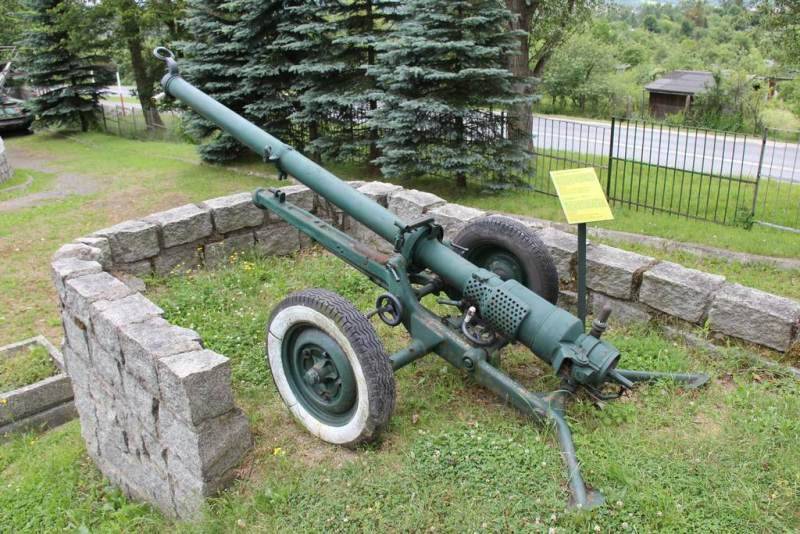
Recoilless gun B-11
At the same time, the Invincible had a very large conflict with the head of the entire SKB, Boris Ivanovich Shavyrin, who supported the development of another project, the Scorpion ATGM. It came to open the rebellious employee, he was threatened with dismissal. However, fortunately, all the differences were eventually settled. In his business, Shavyrin was a true professional and was well aware that Invincible was a designer from God. Sergey Pavlovich has never been vindictive. Before his death in 1965, Boris Ivanovich declared Invincible his successor. The Ministry of Defense Industry agreed with this choice unanimously.
The Bumblebee turned out to be a costly weapon. Each launch cost thousands of rubles. Invincible began to develop a new system that combines the highest manufacturability and multiple cost reductions. In the early sixties, another revolution took place in the ranks of guided anti-tank weapons - the “Malyutka” complex appeared. A new ATGM was created in two years. People already had experience, the element base became better, and yet Sergey Pavlovich’s team worked almost around the clock. And for good reason. Invincible made a small military-technological miracle. The rocket complex "Baby" cost the country five hundred rubles, and in terms of efficiency and ease of management, the complex exceeded all anti-tank systems, produced in Western Europe and the United States. In the sixties and seventies, foreign experts considered the Soviet Union MiG-21, the Kalashnikov assault rifle and, in fact, the “Malyutka”, as “business cards” of the Soviet Union. A decade later, Sergei Pavlovich developed an even more modern ATGM system, called the Chrysanthemum.
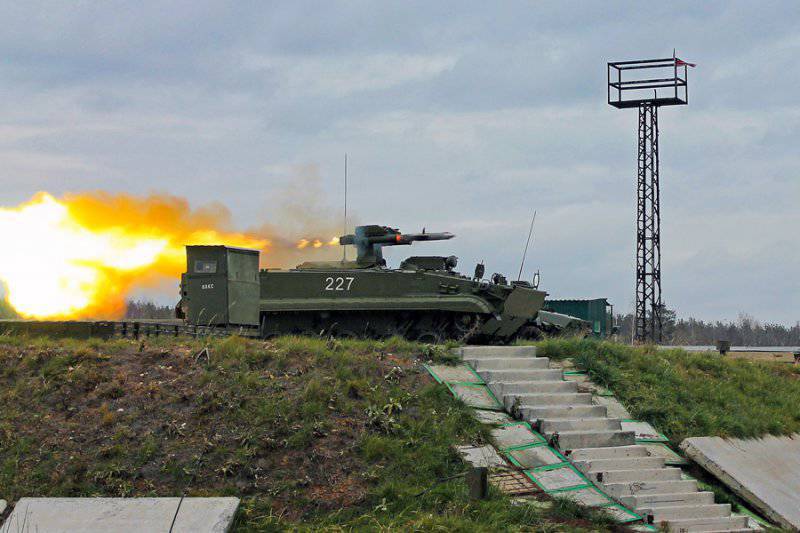
Shooting ATGM "Chrysanthemum" in Kolomna. Final examinations in the 1000 training center for the combat use of rocket forces and artillery of the Ground Forces Photo http: // multimedia.minoborony.rf
In the mid-sixties, the government decided to start developing mobile strategic missile systems. On a competitive basis, work was entrusted to the Kolomna SKB and the Moscow Research Institute-1. The result of the hard work of the designer was the mobile strategic system "Gnome". The rocket had a range of 11 thousands of kilometers, weighed sixty tons and was located on a tracked chassis with dimensions slightly more than a tank. But the commission gave preference to the Muscovites, despite the fact that the weight of their rocket reached ninety tons, it moved on a huge wheeled conveyor. Sergei Pavlovich, who had already become the head of the enterprise (1965 year), had to abandon the “Gnome”.
An interesting example of how, under the conditions of the most severe planning and regulation, an outstanding designer managed to quickly solve various problems. The design bureau did not have the status of a right to a pilot plant, which, of course, was extremely necessary. With the support of Ustinov, huge garages and storage rooms were built on the banks of the Oka River, which filled with technological equipment and machinery. It was impossible to find fault. Stood warehouses in which the machines were stored. Include no one forbade them. This plant has greatly helped in solving many of the tasks assigned to the Machine Building Design Bureau, as it later became known as the Kolomna Defense Enterprise.
After the appointment of the head of the KBM, the life of Sergey Pavlovich changed a lot. He was still engaged in inventing, but already in a much wider sense of the word, including his own solutions to large and small tasks, and project management, and visits to landfills, and much more. A lot of effort took organizational work. The problems before him were raised on a state scale, the designer received the entire factories and institutes under his control. Invisible strings were pulled from the Oka shores to dozens of cities of the Soviet Union, where hundreds of thousands of people of various specialties worked for certain “products”, the purpose and final form of which were unknown to them. An unbeatable example in his memoirs cites an example: “I often found myself in the company of famous scientists or party workers and ... involuntarily fell under the sights of cameras. Later, the reporter wrote down the names of the people captured in the picture. I honestly called my name and saw annoyance on the photo correspondents' face. Many Soviet journalists knew my rare surname, they understood that it was better not to know it - neither the photo nor the text to it would be printed anyway. I understood that I was spoiling successful shots and tried to elude pre-shooting sites in advance, but this was not always possible. ”
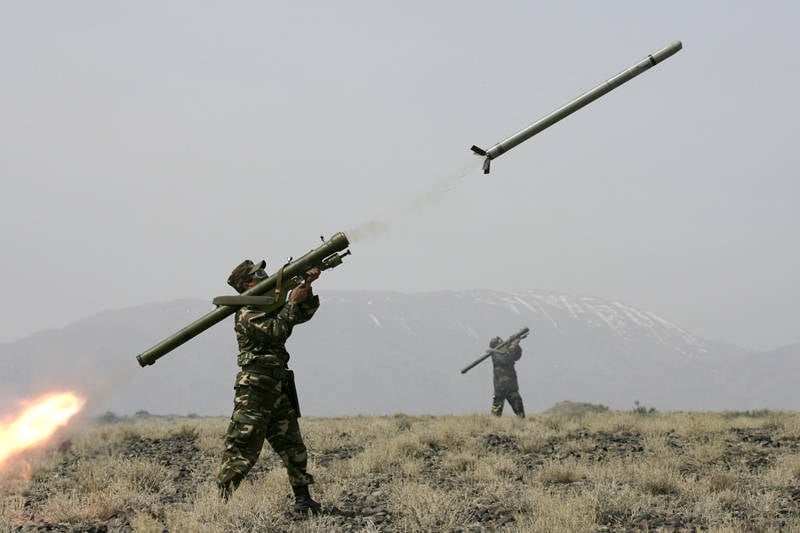
MANPADS "Igla"
The Gnome did not see the Soviet Army. But the whole series, developed by Invincible, portable Strela (1968) and Igla (1981) man-portable air defense systems, and Tochka (1975) tactical missile systems, arrived. A special place in the works of Sergei Pavlovich took the operational-tactical complex "Oka". When the government decided to create the complex, KBM was once again given the status of the parent company. The Volgograd plant “Barricades” was the lead vehicle, the control system equipment was TsNIIAG, and the research institute was 125. In general, more than one hundred and fifty research institutes, design bureaus and factories in the country worked on this project. Still having a worse element base than abroad, Invincible in the mid-seventies created a masterpiece of world rocket production, which even has no analogues in NATO countries. The warhead of the rocket, invisible to radar, rushed to the target at a speed of 1000 m / s from near space and, according to the missilemen, fell into a peg. A couple of years after the "Oka" went into service, began the development of the front-line OTRK "Volga".
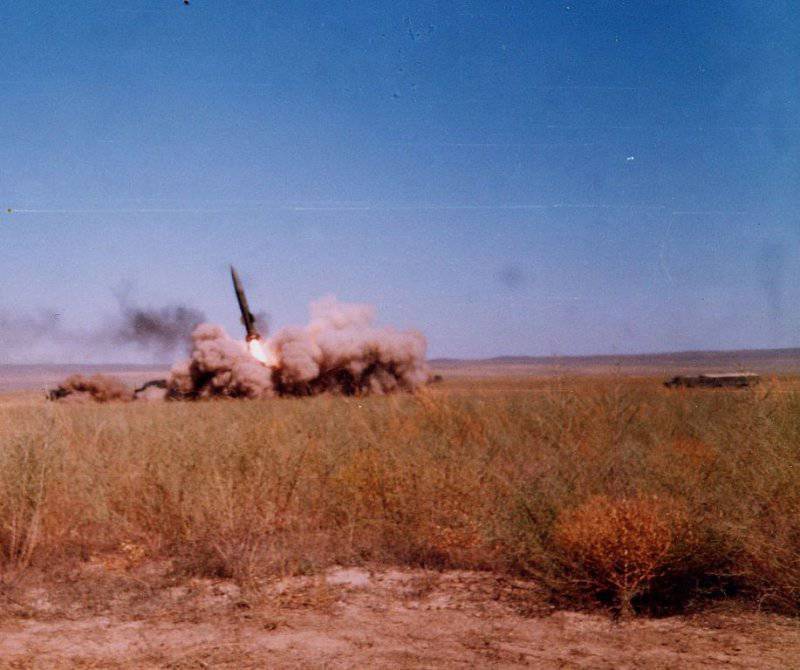
Launch of the 9М79 rocket of the Tochka-U complex at the exercises of the Kazakhstan Army, Sary-Ozek training ground
The eightieth years became the most fruitful for the company of Sergey Pavlovich. A huge number of new developments, the development of a social base, a successful rejuvenation of the team - every third employee was no older than thirty years. In addition to the main areas, Sergey Pavlovich devoted a lot of time to improving the working conditions of people regardless of their place: in the workshop, in the design department or in the enterprise. The designer invited designers to the factory, contributed to the organization of the Bureau of Aesthetics, engaged in refining the working space. He himself worked according to eyewitness accounts for twelve or fourteen hours and only on Sunday allowed himself to rest.
When Gorbachev came to power in the country, many had hopes for quick changes. Among others, Sergei Pavlovich enthusiastically accepted the reform ideas of the new leader, reacted with enthusiasm to the thesis of Mikhail Sergeyevich about the priority of the engineering industry. And in 1985, the Invincible was elected a deputy to the Supreme Soviet of the RSFSR. During the sessions, he had to meet with leaders of various levels of union and republican ministries, serve as an applicant for petitions of directors of enterprises of an electoral district. However, time passed and it became more and more noticeable that, apart from words from the updated leadership of the country, real progress in the economy is not visible. The designer wrote on this subject: “With the designated eye of the head of the KBM, I saw how chaos is growing in various areas of economic management. In all areas of social production performing discipline fell. In the defense industry, because of its rigid hierarchical ladder, these processes were not felt, but we, of course, could not even imagine what awaits us ahead ... ”.
In December 1987, Reagan and Gorbachev signed the Treaty on the Elimination of Shorter and Intermediate-Range Missiles. It was clearly stated average (from 1000 to 5500 kilometers) and a smaller (from 500 to 1000) range. The Oka had a range of 400 kilometers and did not fall under restrictions. What a surprise was Sergei Pavlovich and all the military missile troops of the country when the text of the Treaty was made public. According to the designer himself:
After news on the liquidation of the Oka OTRK The Invincible appealed to various high authorities. He met with Ivanovskiy, the Commander-in-Chief of the Ground Forces, the commander of the missile forces and artillery Mikhalkin, the head of the Main Directorate of Inspection Penkin, the chief of the General Staff Akhromeyev. Neither the top officials of the military department, nor, all the more, the leadership of the defense industry, knew anything about the details of the forthcoming agreement with the United States; everything happened in an atmosphere of the highest secrecy. The news that all the work on his even more flawless product “Oko-U” and the front-line OTRK “Volga” had to be stopped as part of the treacherous document went to the heart of the designer. His company was literally “shot down” on takeoff. Invincible wrote to the Central Committee of the CPSU, the Minister of Defense and the leadership of the Military Industrial Commission a number of letters in which he outlined his views on the incident, and also asked to cancel the destruction of the missile complexes. Of course, he understood perfectly well that he had no chance after signing the Treaty, but could not keep silent. Three years after these events, the head of the General Staff of the USSR - Marshal Akhromeev - shot himself dead, leaving a suicide note in which he said that, as an honest man, he could not see how the Fatherland was dying before his eyes. Invincible himself eventually got to the hospital with nervous exhaustion. In order to get to his feet, in the literal sense of the word, it took him a month of treatment.
In the autumn of 1988, Sergei Pavlovich received an invitation to the Kremlin for a festive reception on the occasion of the anniversary of the October Revolution. During a solemn banquet, he noticed Gorbachev passing through the hall in the circle of his entourage. Overcoming his dislike, Invincible approached the country's leader. After a series of common phrases, the designer reminded Mikhail Sergeyevich of the project of the latest operational-tactical missile system sent to him for approval (and safely lost). After listening to him, Gorbachev promised to make a decision on this issue in the coming days. This time the secretary general kept his word. After a short time, Kolomenskoye “Mechanical Engineering Design Bureau” was ordered as the head enterprise to start work on the creation of a new complex, which had already received the name Iskander. It was first introduced to the general public in August 1999. This OTRK, which brought together the best of Oka and Oki-U in one “bouquet”, was full of unique design ideas and the most modern technologies, it was objectively recognized as the first in the world in its class.
However, Sergei Pavlovich in the ranks of the workers of the KBM by that time was no longer there. In 1989, in accordance with the decision of the Central Committee of the CPSU, the Council of the labor collective was established at its enterprise. Thanks to his work, and also because of the “fashion” of time, characterized by “wide” publicity and encouraging the activity of the masses, the organization began the process of exposing the “jammed nomenclature”. At numerous meetings STK Sergei Pavlovich began to throw mud, and in the end decided to elect a new general designer vote. Invincible asked for clarification from the Central Committee of the CPSU. There he was answered: "Participate in the elections." Most likely, he would have won. But in the spring of 1989, the designer wrote a letter of resignation.
The next years were one of the most difficult in the life of Sergei Pavlovich. The man in whom unique and unparalleled products were produced at KBM, in which at least one hundred apartments were built for employees every year, and their average wages became almost the highest in the industry, was suddenly erased from history. The invincible was left with nothing - all his savings were burned in the flame of reform, and he had to live on a miserable pension. He said in an interview: “Frankly, my wife and I were having a hard time. Both morally and financially. In those years, the Academy of Sciences called me "militarist" by sight. A primitive thought was imposed on society that if we stop making airplanes, tanks, rockets, when we have partners and friends everywhere, it will not take a year for a rich life to come ... Now we are reaping the bitter fruits of this process. ” Incredibly, but the fact is - the genius of the national rocketry in the nineties really misery. True, he repeatedly received insistent proposals from the United States and a number of Arab countries. They offered to work, read lectures at universities, just "talk" with colleagues. Admit it, and quite possibly soon would become a dollar millionaire. However, Sergei Pavlovich always invariably refused: “I perfectly understand how risky such talks are for the defense capability of our country .... Even clarifying or leading questions can be the key to solving various problems. I am not going to make such gifts to the likely opponent. ”
In the late nineties, the black stripe in the life of an outstanding designer ended. There were influential compatriots who, having learned about his problems, invited Invincible to consult in the leading defense enterprises of Russia. Years later, in his native KBM, which has now become OAO NPK KBM, there have been positive changes. Today, the head of the organization is one of Sergey Pavlovich’s favorite pupils - Valery Kashin. Invincible himself continued to work until the last days of his life, being the scientific director of the SEC "Reagent", the chief researcher of the Central Research Institute of Automation and Hydraulics, the adviser to Valery Kashin. He passed away on 11 on April 2014 on the 93 year of life.
Sergei Pavlovich was ardently in love with his Motherland, he tirelessly reminded that only a strong, well-equipped army could ensure the prosperity of the state and the peaceful labor of the country's inhabitants. He said: “We have lost many allies and have not gained new ones. The phrase of the Russian Tsar Alexander III, who once rightly remarked that Russia has only two reliable and loyal friends - the army and the navy, can be more relevant.
According to the book, S.P. Invincible "Russian weapons. From the notes of the General Designer of Rocket Systems ”and a number of interviews with him.
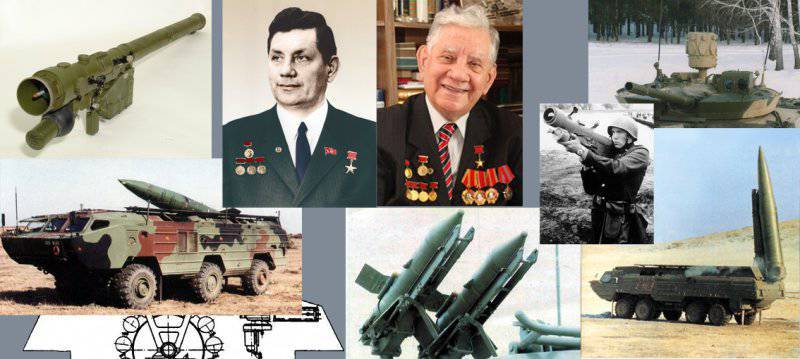
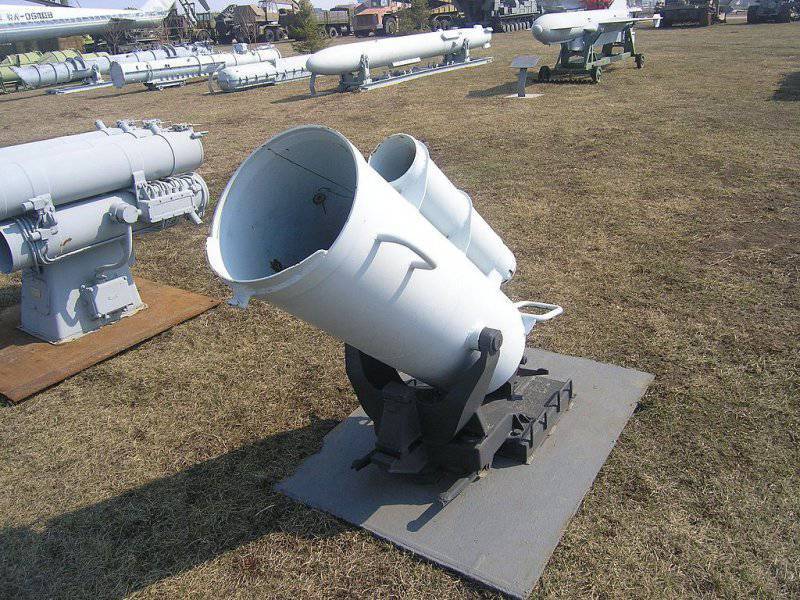
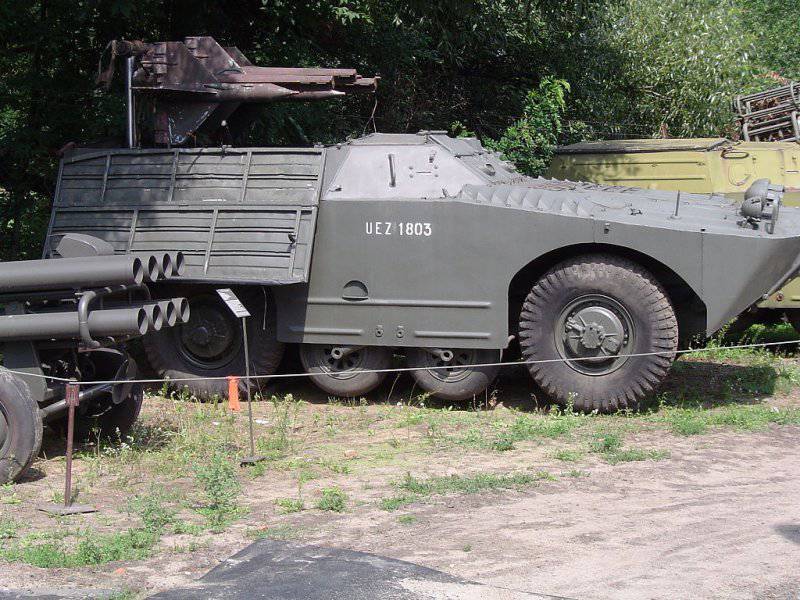
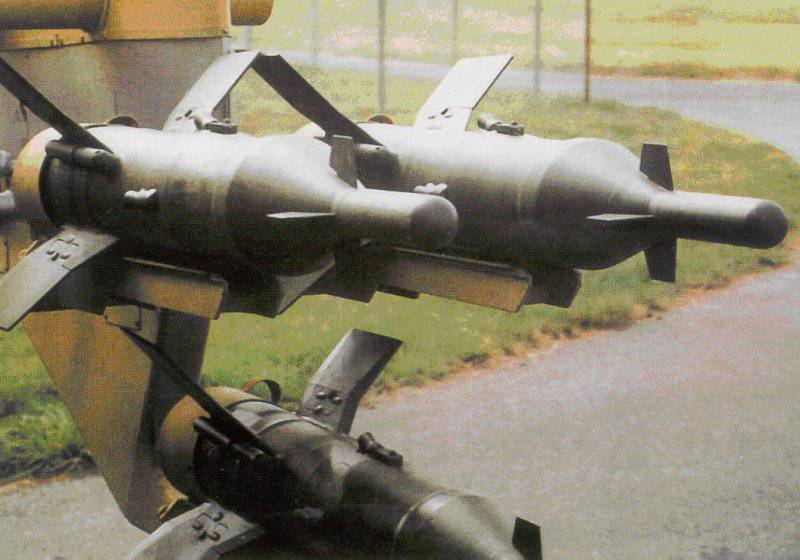
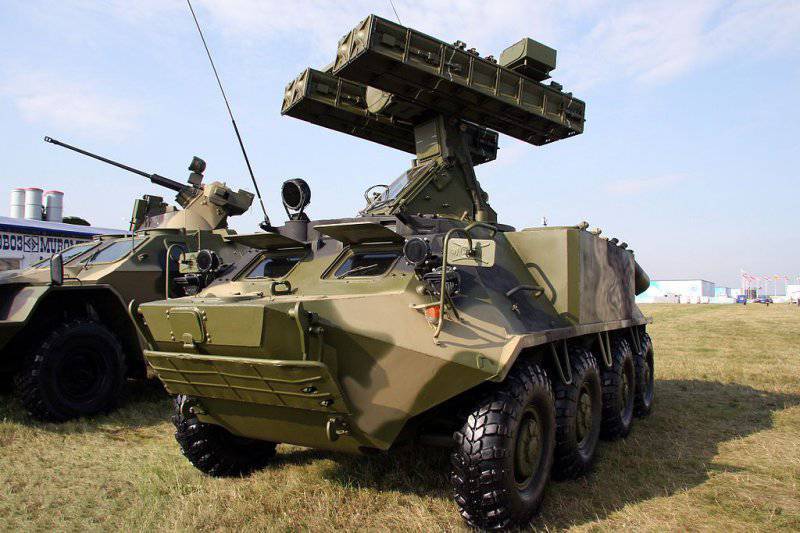
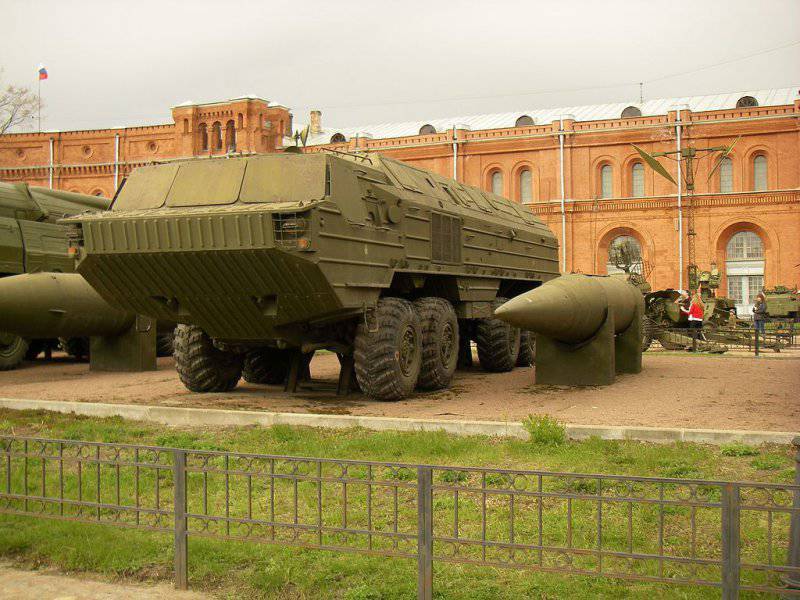
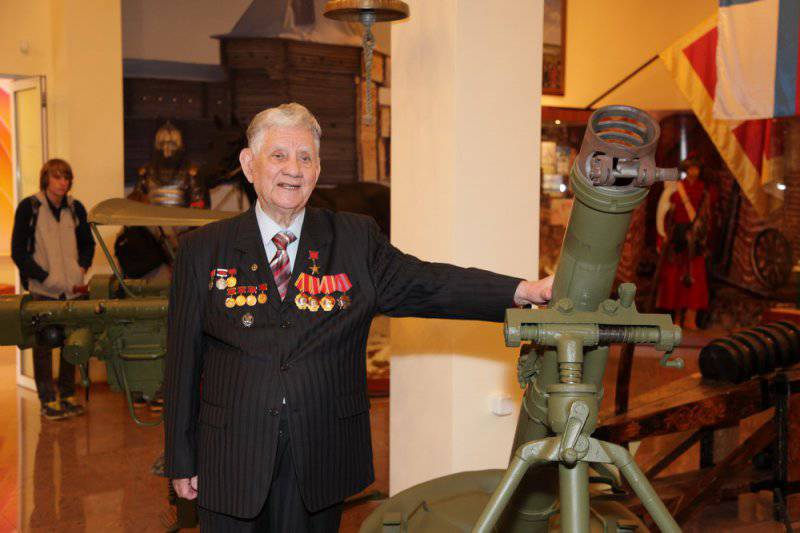
Information